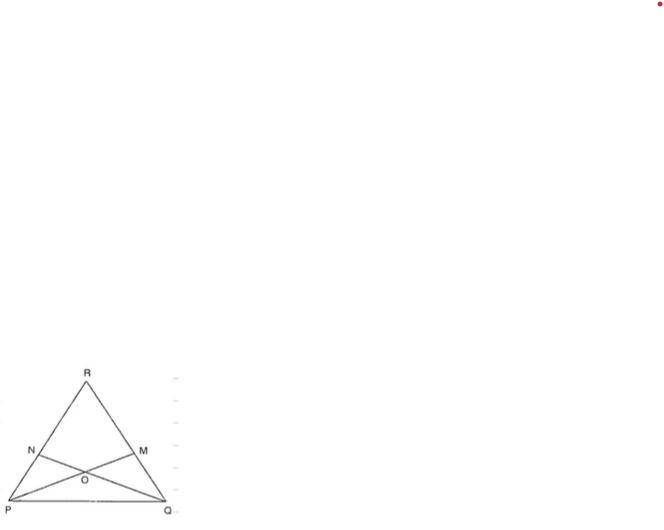In the reaction p+19F→α+16O, the massesare
m(p)=1.007825u, m(α)=4.002603u,
m(F)=18.998405u, m(O)=15.994915u.
Calculate the Q of the reaction from these data.
The correct Answer is:8.12 MeV
Topper's Solved these Questions
- RELATIVITYBOOK - RESNICK AND HALLIDAYCHAPTER - RELATIVITYEXERCISE - PRACTICE QUESTIONS (Single Corrrect Choice Type)
31 Videos
- RELATIVITYBOOK - RESNICK AND HALLIDAYCHAPTER - RELATIVITYEXERCISE - PRACTICE QUESTIONS (Linked Comprehension)
11 Videos
- RELATIVITYBOOK - RESNICK AND HALLIDAYCHAPTER - RELATIVITYEXERCISE - CHECKPOINT
2 Videos
- PHOTONS AND MATTER WAVESBOOK - RESNICK AND HALLIDAYCHAPTER - PHOTONS AND MATTER WAVESEXERCISE - PRACTICE QUESTIONS(Integer Type)
4 Videos
- RIGID BODY DYNAMICS - IBOOK - RESNICK AND HALLIDAYCHAPTER - RIGID BODY DYNAMICS - IEXERCISE - PRACTICE QUESTIONS (INTEGER TYPE))
3 Videos
Similar Questions
At time t = 2.3 s, a 4 kg block that initially moves with a constant speed of 6 m/s undergoes an inelastic collision with another block. Any two inertial observers must agree that
View SolutionParagraph: A subatomic particle X spontaneously decays into two particles, A and B, each of rest energy 1.40×102MeV. The particles fly off in opposite directions, each with speed 0.827c relative to an inertial reference frame S.
Determine the total energy of particle A.
View SolutionIn Fig frame S' has velocity 0.90c relative to frame S. An observer in frame S' measures two events as occurring at the following spacetime coordinates: event Yellow at (5.0m, 20ns) and event Green at (-2.0m, 4.5 ns). An observer in frame S wants to find the temporal separation ΔtGY=tG−tY between the events. (a) Which equation in Table 36-2 should be used? (b) Should +0.90c or -0.90c be substituted for v in the parentheses on the equation's right side and in the Lorentz factor γ? What value should be substituted into the (c ) first and (d) second term in the parentheses?
View SolutionWhen a beam of 10.6eV photons of intensity 2.0W/m2 falls on a platinum surface of area 1.0×10−4m2 and work function 5.6eV,0.53% of the incident photons eject photoelectrons. Find the number of photoelectrons emitted per second and their minimum and maximum energy (in eV).
Take 1eV=1.6×10−19J.
View SolutionFour solid sphereas each of diameter √5cm and mass 0.5kg are placed with their centres at the corners of a square of side 4cm. The moment of inertia of the system about the diagonal of the square is N×10−4kg−m2, the N is -
View SolutionIn Figure, ∠QPR=∠PQR and M and N are respectively on sides QR and PR of PQR such that QM=PN . Prove that OP=OQ, where O is the point of intersection of PM and QN.

View SolutionCo-efficient of αt in thet expansion of (α+p)m−1+(α+p)m−2(α+q)+(α+p)m−3(α+q)2+.α+qm−1 where α≠−qandp≠q is :
View SolutionIn Figure, PQRS is a parallelogram, PO and QO are, respectively, the angle bisectors of ∠P and ∠Q . Line LOM is drawn parallel to PQ . Prove that: PL=QM (ii) LO=OM
View SolutionIf m, n, o, p and q are integers, then m (n +o) (p−q) must be even when which of the following is even? m (b) p (c) m + n (d) n + p
View SolutionA C D F G I J L M O P ?
View Solution_o p_, m o _ n, _ _ p n, m o p _,
View SolutionWhat is the distance between the points P(m cos2 alpha,m sin2 alpha) and Q(m cos2 beta,m sin2 beta)
View SolutionM,P का पुत्र है ।Q पौत्री है O की जो P का पति है ।M का Oसे क्या सम्बन्ध है ?
View SolutionCoefficient of αt in the expansion of (α+p)m−1+(α+p)m−2(α+q)+(α+p)m−3(α+q)2+…….+(α+q)m−1, where α≠−qandp≠q is
View SolutionIn Figure, ∠QPR=∠PQR and M and N are respectively on sides QR and PR of PQR such that QM=PN . Prove that OP=OQ, where O is the point of intersection of PM and QN.
View Solution

